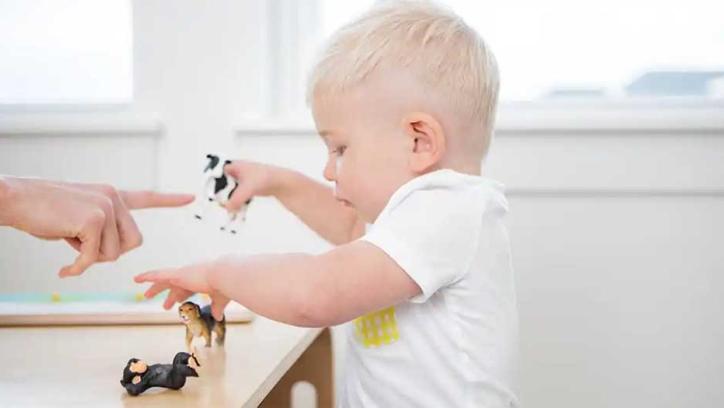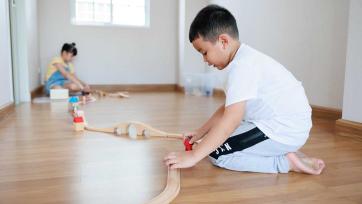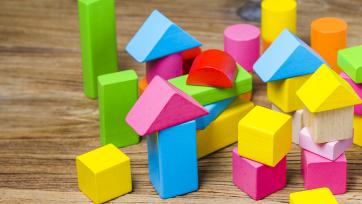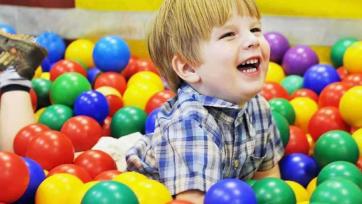Teaching a child an animal name is a pretty simple task. After all, we all learned them when we were kids. But how can you ensure that they understand while having a good time? In this post, we will share three fun and engaging ways to teach animal names to your children. By the end, they'll be able to list all the animals they know by name!

How to Teach a Child an Animal Name
When it comes time to teach your child an animal name, there are a few different methods that you can use.
One popular way is to have your child learn the animal's name as part of its routine. For example, if your child wakes up each morning and sees a bunny in the living room, they would learn the bunny's name as part of their morning routine. This method can be helpful if you have a lot of animals in your home or your child is especially interested in certain animals.
Another option is to have a naming contest with your children. In this contest, you ask them to come up with names for various animals and vote on their favourites. This method can be helpful if you have many animals or if you want to introduce new animals into your home without remembering their names.
Whatever method you choose, involve your child in the process and let them feel proud when they know how to name an animal correctly.
How to Choose the Right Animal Name for Your Child
As parents, we are responsible for teaching our children animal names. This critical skill will aid in their development as communicators and problem solvers. The best way to do this is by modelling the behaviour ourselves. When deciding on an animal name for your kid, consider the following:
1. Start with easy names first. Start with more exact names if your child has difficulty pronouncing or remembering words. Names like Piggy, Duckie, and Bunny will be more straightforward for them to learn than Tiger, Lion, and Gorilla.
2. Use family members as models. When naming our pets after family members, our children can easily associate the name with a familiar face. For example, we might call our son "Bear" because his older brother is named "Bear", and he knows how to say the word "bear" correctly.
3. Avoid unique nicknames or terms of endearment in the name selection process. Unique nicknames or terms of endearment might make it difficult for your child to remember the name if they ever have to say it out loud in public or when interacting with other children at school or daycare facilities. For example, "Snickers" would not be a good choice for a pet name because it rhymes with “penis” and could lead to embarrassing moments when Snickers needs help getting his food from the dish.
Guidelines for Selecting an Appropriate Animal Name
Some parents want to give their children a name for every animal in the world. It is optional to do this, though. You can teach your child an animal name by exposing them to as many different animals as possible and observing which ones they consistently call by their name. Once you have a few words your child likes, you can begin teaching them the pronunciation of each one.
There are several ways to teach an animal name. One way is to take your child on a nature walk and point out different animals while naming them. Another is to watch children's shows that focus on animal personalities or habitats, such as "Wild Kratts" or "Animal Empire." The important thing is for you to model how you would like your child to address each animal.
Once your child has learned the basics of calling each animal by its name, it is essential to ensure they understand why we call these creatures by specific names. This can be done through stories or asking questions about particular animals during nature walks or other activities. By doing this, you will help reinforce the knowledge your child has acquired and help them develop a love and appreciation for all things nature!
Tips for Teaching an Animal Name to a Child
One of the first steps in teaching a child an animal name is to help them understand the concept of an animal's name. Once they have grasped the idea, introduce them to some animals and ask them their names. If you have pictures of the animals, put them up so children can see them. After they have named a few animals, try asking them to spell their name. Finally, ask them to tell you what they think the animal's personality is like.
Conclusion
Since every kid is unique and develops at their rate, there is no universal solution to this problem. However, some suggestions for teaching a child an animal name include: introducing the animals excitingly and engagingly; having the child repeat the animal's name after you; providing example sentences with corresponding names for each animal; and having flashcards or other learning tools that include the animal's name. As long as you are patient, enthusiastic, and dedicated to teaching your child about animals, chances are they will learn it eventually!








